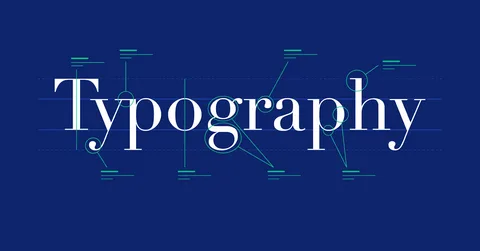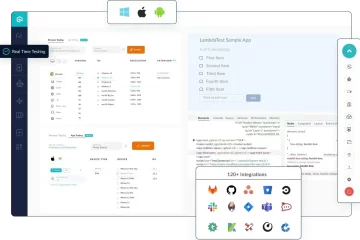A Guide to Choosing the Perfect Typeface

In the realm of branding and design, the logotype font plays a pivotal role in establishing a brand’s identity, conveying its personality, and creating a lasting impression. A well-crafted logotype font can elevate a brand, making it instantly recognizable and memorable to consumers. With an abundance of logotype fonts available today, selecting the ideal typeface that resonates with a brand’s essence can be a challenging yet rewarding endeavour. In this blog post, we’ll explore the significance of logotype font, considerations for choosing the perfect typeface, and tips for creating impactful brand identities.
- Understanding Logotype Fonts: A logotype font, often referred to as a logo font or brand font, is a typeface specifically designed for use in logos, brand identities, and visual branding materials. These fonts are crafted to reflect a brand’s personality, values, and aesthetics, serving as a visual representation of the brand’s identity and positioning in the marketplace.
- The Importance of Choosing the Right Logotype Font: The choice of a logotype font can profoundly influence a brand’s perception, recognition, and overall success. Here’s why selecting the right logotype font is crucial:
- Brand Identity: A logotype font serves as a cornerstone of a brand’s visual identity, reinforcing its personality, values, and messaging across various touchpoints and mediums.
- Recognition: A distinctive and memorable logotype font helps a brand stand out from competitors, making it easier for consumers to recognize and recall the brand.
- Consistency: A consistent logotype font across all brand materials fosters brand cohesion, professionalism, and trustworthiness.
- Versatility: A versatile logotype font that performs well across different applications and platforms ensures flexibility and adaptability in brand communications.
- Factors to Consider When Choosing a Logotype Font: When selecting a logotype font for a brand identity, consider the following factors to ensure alignment with the brand’s essence and objectives:
- Brand Personality: Determine the brand’s personality traits, such as modern, traditional, playful, or sophisticated, and select a logotype font that encapsulates these characteristics.
- Legibility and Readability: Prioritize legibility and readability to ensure the logotype font communicates the brand’s name clearly and effectively across various sizes and mediums.
- Versatility and Scalability: Choose a logotype font that performs well across different applications, from digital platforms to print materials, and scales effectively without compromising quality.
- Uniqueness: Opt for a logotype font that offers distinctive features, flourishes, or customizations to create a unique and memorable brand identity.
- Licensing and Usage: Review the logotype font’s licensing terms, restrictions, and compatibility with design software to ensure compliance and seamless integration.
- Popular Logotype Fonts and Their Characteristics: There is a diverse array of logotype fonts available, each with its own unique characteristics and applications. Here are some popular logotype fonts and their defining features:
- Futura: A geometric sans-serif font known for its clean, modern, and timeless design, making it a popular choice for tech, fashion, and creative brands.
- Baskerville: A classic serif font characterized by its elegance, sophistication, and readability, making it ideal for luxury, editorial, and professional brands.
- Gotham: A versatile sans-serif font celebrated for its neutrality, clarity, and extensive range of weights and styles, suitable for a wide range of brand applications.
- Script Fonts: Handwritten or script fonts offer a personalized, human touch, making them ideal for artisanal, boutique, and lifestyle brands.
- Tips for Using Logotype Fonts Effectively: To maximize the impact of your chosen logotype font, consider the following tips for effective use in branding:
- Simplicity: Keep the logotype design simple and uncluttered to ensure clarity, legibility, and scalability across different mediums and sizes.
- Consistency: Maintain consistent use of the logotype font across all brand materials, including digital platforms, print materials, signage, and packaging, to reinforce brand identity and recognition.
- Color and Contrast: Pair the logotype font with appropriate colors and background contrasts to enhance visibility, readability, and visual appeal.
- Customization: Consider customizing or modifying the logotype font to create a unique and distinctive brand mark that stands out and resonates with consumers.
- Testing and Feedback: Test the logotype font across various applications, gather feedback from stakeholders and target audiences, and make adjustments as needed to ensure optimal performance and alignment with brand objectives.
- Conclusion: Choosing the perfect logotype font is a critical step in crafting a memorable and impactful brand identity that resonates with consumers and stands the test of time. By understanding the importance of brand personality, considering key factors in font selection, and adhering to best practices in design and implementation, you can create a logotype font that embodies a brand’s essence, values, and aspirations. Whether you’re launching a new brand or refreshing an existing one, investing time and effort into selecting and utilizing the right logotype font will pay dividends in creating a cohesive, compelling, and recognizable brand presence in the marketplace.
In conclusion, logotype fonts are integral elements in creating distinctive and memorable brand identities that resonate with consumers, communicate brand values, and differentiate brands in competitive markets. By selecting, customizing, and implementing logotype fonts thoughtfully and strategically, designers and brand professionals can craft visually compelling and emotionally resonant brand identities that leave a lasting impression and foster enduring relationships with audiences. Whether you’re a brand owner, designer, or marketer, understanding the nuances of logotype fonts and their role in branding can empower you to create impactful and successful brand identities that stand out and succeed in today’s dynamic and evolving marketplace.







